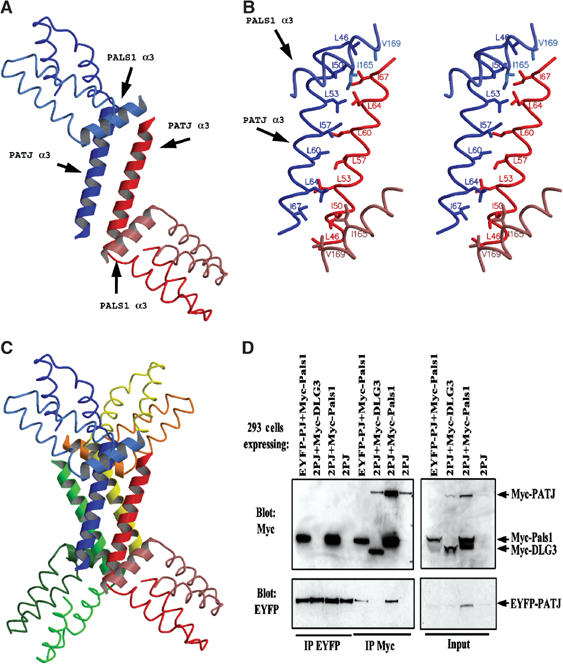Figure 5.

Analysis of possible higher oligomeric states formed by L27 domains. (A) The third helix of each PATJ L27 domain in the asymmetric unit interacts with each other through a long coiled-coil. One heterodimer is colored in red and the other in blue. Note, the coloring scheme in this figure is different from that used in the previous figures. (B) Stereoview showing the detailed interactions between the two L27PATJ domains in the asymmetric unit. (C) The four-helical bundle formed between two asymmetric units. (D) The L27PATJ domain does not dimerize in the presence or absence of Myc-L27PALS1N. Lysates from 293 cells expressing the indicated proteins were subjected to immunoprecipitations with the indicated antibodies (2PJ=Myc-PATJ+EYFP-PATJ). The resultant immunoprecipitates were resolved by SDS–PAGE and transferred to nitrocellulose. Membranes were first immunoblotted with anti-Myc antibodies, stripped, and then immunoblotted with anti-EYFP antibodies. Input represents 5% of the material used in the immunoprecipitations.
